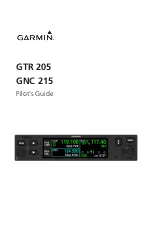
Commissioning
English, Revision 06, Date: 12.07.2011
8
2
Commissioning
2.1
Presettings
The CAN baud rate is set to 125Kbaud, the Node ID is preset to 1. The interpreter is
preset to a track width of 24 mm (dark track on light background) and 100 mm reading
distance for the camera G 73841. The thresholds for signaling deviation are set to
±10 mm and ±15 mm. The parallel interface is deactivated.
The presettings can be altered using either a terminal program (e. g. Hyperterm on
your PC) or via the various SDOs of the CANopen® protocol (also refer to section 4 on
page 19 and 5 on page 38).
2.2
Track Detection
In order to assure a reliable track detection, it is essential that the contrast of the line
on the ground compared to its environment is significant. Due to the signal processing
respectively the integrated filter, the system is able to bridge a short-time drop out of
the track, depending on duration of the drop out and the velocity. Shadows and light
beams may have significant influence on the performance of the system as the track
recognition may be impaired. It is, for example, possible that a combination of shad-
ows and light beams simulates a virtual guidance that may be followed by the vehicle.
Therefore it is recommended to ensure that the guidance line is protected from exter-
nal light using an appropriate cover (not included in this scope of supply).
In order to avoid reflections from reflective or sealed surfaces, the cameras should be
mounted with an inclination of 15 to 20
o
in direction of travel.
Figure 2
Recom. inclination of the camera in case of reflective surfaces
The max. width of the guidance line depends on the used camera lens as well as on
the height above the guidance line at which the camera is installed. The width of the
guidance line is ideal once its width on the control display is between 1/6 and 1/3 of
the overall width of the display. There are two options for the guidance line: dark on
light surface or light on dark surface.
o
p
tic
a
l a
xis
to
Installation height








































